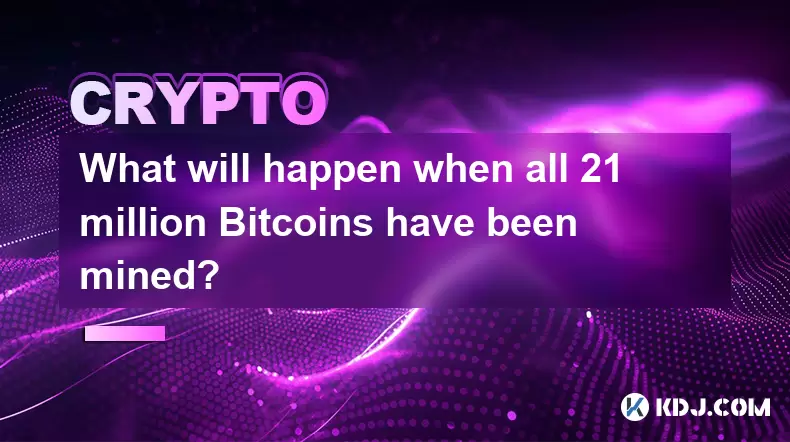-
 Bitcoin
Bitcoin $113900
0.47% -
 Ethereum
Ethereum $3491
-0.42% -
 XRP
XRP $2.876
-1.87% -
 Tether USDt
Tether USDt $1.000
0.03% -
 BNB
BNB $750.4
-0.49% -
 Solana
Solana $161.3
-1.76% -
 USDC
USDC $0.9999
0.01% -
 TRON
TRON $0.3242
-0.91% -
 Dogecoin
Dogecoin $0.1985
-0.19% -
 Cardano
Cardano $0.7241
1.49% -
 Hyperliquid
Hyperliquid $38.05
0.56% -
 Stellar
Stellar $0.3896
2.92% -
 Sui
Sui $3.442
0.61% -
 Chainlink
Chainlink $16.18
0.92% -
 Bitcoin Cash
Bitcoin Cash $541.0
0.51% -
 Hedera
Hedera $0.2427
2.67% -
 Ethena USDe
Ethena USDe $1.001
0.03% -
 Avalanche
Avalanche $21.39
-0.68% -
 Toncoin
Toncoin $3.669
2.25% -
 Litecoin
Litecoin $109.5
0.95% -
 UNUS SED LEO
UNUS SED LEO $8.966
0.11% -
 Shiba Inu
Shiba Inu $0.00001218
0.77% -
 Polkadot
Polkadot $3.598
1.23% -
 Uniswap
Uniswap $9.164
1.14% -
 Monero
Monero $297.7
1.21% -
 Dai
Dai $1.000
0.00% -
 Bitget Token
Bitget Token $4.328
0.84% -
 Pepe
Pepe $0.00001047
1.05% -
 Cronos
Cronos $0.1329
0.70% -
 Aave
Aave $257.6
1.03%
What is a 51% attack, and could it destroy Bitcoin?
A 51% attack occurs when an entity controls over half a blockchain’s hashrate, enabling transaction reversals and double-spending, though Bitcoin's scale makes such attacks highly impractical.
Aug 03, 2025 at 05:08 pm

Understanding the Concept of a 51% Attack
A 51% attack refers to a scenario in which a single entity or group gains control of more than half of a blockchain network’s total computational power, also known as hashrate. In proof-of-work (PoW) systems like Bitcoin, miners compete to solve complex cryptographic puzzles to validate transactions and add new blocks to the blockchain. The security of the network relies on the assumption that no single miner or mining pool can dominate the network's hashrate. When an actor controls over 50% of the mining power, they can manipulate the blockchain in ways that undermine its integrity. This includes the ability to reverse transactions, prevent new transactions from being confirmed, or even double-spend coins.
The term "51% attack" is somewhat misleading because it implies that exactly 51% is required. In practice, attackers typically need a majority hashrate to reliably execute such attacks, though the higher the percentage, the greater the control. The attack does not allow the attacker to create new bitcoins out of thin air or steal coins directly from others' wallets, as private keys are still required for ownership transfers. However, it does compromise the immutability and consensus mechanism that underpin trust in decentralized networks.
How a 51% Attack Could Be Executed on Bitcoin
To carry out a 51% attack on Bitcoin, an attacker would need to accumulate over 50% of the total network hashrate. This requires an enormous investment in mining hardware and energy, as Bitcoin’s network difficulty adjusts dynamically and is currently among the highest in the world. The steps involved in such an attack are technically complex and resource-intensive:
- Acquire or rent sufficient mining power: The attacker must either purchase thousands of ASIC miners or rent hashrate from cloud mining services, if available at scale.
- Mine a private blockchain fork: While the public network continues to validate blocks, the attacker secretly mines their own version of the blockchain, potentially excluding or rearranging transactions.
- Reorganize the public chain: Once the private chain becomes longer than the public one, the attacker broadcasts it to the network. Due to the longest-chain rule in Bitcoin, nodes accept this new version as valid.
- Execute double-spending: If the attacker had spent bitcoins on an exchange before initiating the attack, they could reverse those transactions by replacing the blocks containing them, effectively regaining the coins while keeping the goods or funds received.
This process is extremely difficult on Bitcoin due to its massive hashrate, estimated in exahashes per second (EH/s), and the global distribution of mining operations. Smaller cryptocurrencies with lower hashrates have fallen victim to such attacks, but Bitcoin’s scale makes it highly resistant.
Could a 51% Attack Destroy Bitcoin?
A successful 51% attack would not destroy Bitcoin in a technical sense. The network would continue to operate, and the blockchain would remain functional. However, the perceived trust in Bitcoin as a secure and immutable ledger could be severely damaged. If users and investors believe that transactions can be reversed or manipulated, confidence in the network may erode, leading to a drop in adoption and value.
The attack would likely trigger responses from the community, including potential protocol changes, mining pool restructuring, or emergency forks to restore integrity. Bitcoin’s open-source nature allows developers to respond to threats, though any such changes would require broad consensus. Additionally, exchanges and services might implement longer confirmation times or enhanced monitoring to detect suspicious reorganizations.
It is important to note that even if an attacker controls 51% of the hashrate, they cannot alter Bitcoin’s monetary policy, such as increasing the block reward or changing the 21 million coin cap. The core rules of the protocol are enforced by full nodes, which independently validate all transactions and blocks. An invalid block—such as one creating extra bitcoins—would be rejected regardless of the attacker’s mining power.
Real-World Examples and Lessons from Other Blockchains
While Bitcoin has never experienced a 51% attack, several smaller PoW blockchains have. For example:
- Bitcoin Gold (BTG) suffered multiple 51% attacks in 2018 and 2020, resulting in double-spending of over $75,000 worth of coins. The attackers reversed transactions after making large withdrawals from exchanges.
- Ethereum Classic (ETC) faced repeated attacks in 2019 and 2020, with over 4,000 blocks reorganized in one incident. These attacks highlighted the vulnerability of networks with concentrated hashrate and lower overall security.
- Verge (XVG) was attacked in 2018 due to weaknesses in its multi-algorithm mining design, allowing attackers to exploit timestamp manipulation and flood the network with blocks.
These cases demonstrate that 51% attacks are feasible on smaller networks where hashrate can be acquired or rented relatively cheaply. They also show that exchanges are common targets, as attackers aim to withdraw funds before the network detects the reorganization. Bitcoin’s vastly superior hashrate and economic incentives make such attacks impractical, but the lessons emphasize the importance of decentralized mining and network resilience.
Preventative Measures and Network Defenses
Bitcoin incorporates several built-in and community-driven defenses against 51% attacks:
- Economic disincentives: The cost of acquiring 51% of Bitcoin’s hashrate far exceeds any potential gains from double-spending, making the attack economically irrational.
- Full node validation: Millions of full nodes independently verify every transaction and block, ensuring that invalid changes are rejected.
- Mining decentralization: Although mining pools exist, the actual hardware is geographically dispersed, reducing the risk of centralized control.
- Hashrate monitoring: Services like Blockchain.com and BTC.com provide real-time data on mining pool distribution, allowing early detection of hashrate concentration.
- Exchange confirmation policies: Most exchanges require six or more confirmations before releasing funds, increasing the difficulty of successful double-spends.
Additionally, the Bitcoin community can respond to threats by adopting new consensus rules or encouraging miners to avoid centralized pools. While no system is entirely immune, the combination of technical safeguards and economic rationality makes Bitcoin highly resistant to such attacks.
Frequently Asked Questions
Can a government launch a 51% attack on Bitcoin?
Even a well-funded government would face immense challenges. The energy and hardware required to overpower Bitcoin’s hashrate are prohibitively expensive. Moreover, such an attack would likely trigger a global response, including potential protocol upgrades to neutralize the threat.
Does a 51% attack allow stealing of private keys?
No. A 51% attack does not compromise private keys. It only allows manipulation of transaction ordering and confirmation. Stealing funds directly from wallets remains impossible without access to the private keys.
Can proof-of-stake blockchains suffer 51% attacks?
In proof-of-stake (PoS) systems, a similar attack is called a “long-range” or “finality” attack, where an attacker with over 50% of staked coins attempts to rewrite history. However, PoS networks use different mechanisms like slashing and checkpointing to deter such behavior.
Is cloud-based hashrate rental a threat to Bitcoin?
Currently, the amount of hashrate available for rent on platforms like NiceHash is far too small to threaten Bitcoin. Even if aggregated, it represents a tiny fraction of the total network power, making large-scale attacks infeasible.
Disclaimer:info@kdj.com
The information provided is not trading advice. kdj.com does not assume any responsibility for any investments made based on the information provided in this article. Cryptocurrencies are highly volatile and it is highly recommended that you invest with caution after thorough research!
If you believe that the content used on this website infringes your copyright, please contact us immediately (info@kdj.com) and we will delete it promptly.
- Navigating the Meme Coin Mania: Cold Wallets, SHIB, and DOGE in 2025
- 2025-08-03 22:30:16
- Bitcoin's Price Fall and Scrutiny: What's a New Yorker to Think?
- 2025-08-03 22:30:16
- Altcoins Most Searched: Hedera (HBAR) and the ETF Hype
- 2025-08-03 20:50:16
- Arbitrage Adventures: Creditcoin, Kaspa, and Chasing Crypto Profits
- 2025-08-03 20:30:16
- Claude HIVE & Code Agents: Faster Coding Revolution?
- 2025-08-03 20:50:16
- Trump Media, Bitcoin, and Crypto: A Surprising Alliance in the Making?
- 2025-08-03 21:30:16
Related knowledge

What is the difference between holding Bitcoin on an exchange versus in a personal wallet?
Aug 02,2025 at 03:15pm
Understanding Custodial vs Non-Custodial ControlWhen holding Bitcoin on an exchange, users are essentially entrusting their assets to a third party. E...

What is a 51% attack, and could it destroy Bitcoin?
Aug 03,2025 at 05:08pm
Understanding the Concept of a 51% AttackA 51% attack refers to a scenario in which a single entity or group gains control of more than half of a bloc...

What are the biggest security risks associated with holding Bitcoin?
Aug 03,2025 at 03:16pm
Exposure to Private Key CompromiseOne of the most critical security risks when holding Bitcoin is the compromise of private keys. These cryptographic ...

Can governments shut down or ban Bitcoin?
Aug 02,2025 at 09:44am
Understanding Bitcoin’s Decentralized StructureBitcoin operates on a decentralized peer-to-peer network, meaning it is not controlled by any single en...

What will happen when all 21 million Bitcoins have been mined?
Aug 03,2025 at 09:50am
Understanding the 21 Million Bitcoin CapThe 21 million Bitcoin cap is a foundational rule embedded in Bitcoin’s source code, designed by Satoshi Nakam...

What are Bitcoin transaction fees, and why do they fluctuate?
Aug 03,2025 at 01:51am
Understanding Bitcoin Transaction FeesBitcoin transaction fees are small amounts of Bitcoin paid by users to miners for processing and confirming tran...

What is the difference between holding Bitcoin on an exchange versus in a personal wallet?
Aug 02,2025 at 03:15pm
Understanding Custodial vs Non-Custodial ControlWhen holding Bitcoin on an exchange, users are essentially entrusting their assets to a third party. E...

What is a 51% attack, and could it destroy Bitcoin?
Aug 03,2025 at 05:08pm
Understanding the Concept of a 51% AttackA 51% attack refers to a scenario in which a single entity or group gains control of more than half of a bloc...

What are the biggest security risks associated with holding Bitcoin?
Aug 03,2025 at 03:16pm
Exposure to Private Key CompromiseOne of the most critical security risks when holding Bitcoin is the compromise of private keys. These cryptographic ...

Can governments shut down or ban Bitcoin?
Aug 02,2025 at 09:44am
Understanding Bitcoin’s Decentralized StructureBitcoin operates on a decentralized peer-to-peer network, meaning it is not controlled by any single en...

What will happen when all 21 million Bitcoins have been mined?
Aug 03,2025 at 09:50am
Understanding the 21 Million Bitcoin CapThe 21 million Bitcoin cap is a foundational rule embedded in Bitcoin’s source code, designed by Satoshi Nakam...

What are Bitcoin transaction fees, and why do they fluctuate?
Aug 03,2025 at 01:51am
Understanding Bitcoin Transaction FeesBitcoin transaction fees are small amounts of Bitcoin paid by users to miners for processing and confirming tran...
See all articles

























































































